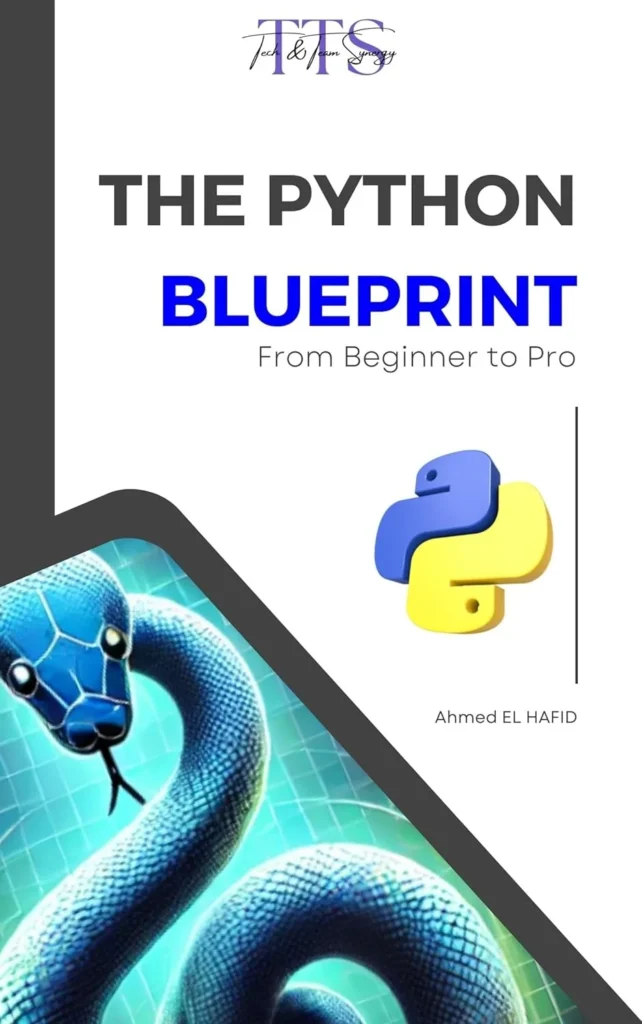In the rapidly evolving tech landscape, Python has emerged as one of the most versatile and widely-used programming languages. Known for its simplicity and adaptability, Python is a go-to tool for developers across industries. But what makes Python so versatile? This article delves deep into Python’s features, applications, and the reasons behind its universal appeal.
If you’re ready to master Python and unlock its full potential, don’t miss The Python Blueprint—From Beginner to Pro. This comprehensive guide takes you on a journey from Python fundamentals to advanced concepts, giving you the skills to excel in programming, data science, web development, and beyond.
To explore how Python drives career growth, check out Developing Python Skills for Career Growth.
What Makes Python So Versatile?
1. Simple and Readable Syntax
Python’s intuitive and easy-to-learn syntax makes it beginner-friendly. Unlike languages like C++ or Java, Python’s code is straightforward and almost like writing in plain English. This simplicity speeds up learning and reduces the risk of errors, making it ideal for both new programmers and seasoned developers.
Python’s simplicity is a key factor in its growing popularity among learners, as highlighted in Why Learn Python: Exploring Its Versatility and Career Benefits.
2. Extensive Library and Framework Support
Python provides an extensive collection of libraries and frameworks that cater to a wide array of use cases:
- Data Science & Machine Learning: Libraries like NumPy, Pandas, TensorFlow, and Scikit-learn.
- Web Development: Frameworks such as Django and Flask for creating robust web applications.
- Automation & Scripting: Tools like Selenium and BeautifulSoup simplify repetitive tasks.
Its libraries enable developers to accomplish tasks with minimal coding effort, enhancing Python’s adaptability across fields.
3. Cross-Platform Compatibility
Python is a cross-platform language, meaning it can run seamlessly on Windows, macOS, and Linux without requiring significant changes to the code. Moreover, Python integrates with languages like C and Java, making it perfect for hybrid systems.
For a deeper look into technology synergies, visit Bridging Technology and Team Dynamics for Success.
Applications of Python
Python’s versatility extends to its applications, where it powers diverse industries. Here’s a breakdown:
1. Data Science and Machine Learning
Python dominates the data science domain due to its simplicity and robust libraries. It enables analysts to manipulate data efficiently and create predictive models.
- Key Tools: Jupyter Notebook, Pandas, TensorFlow.
2. Web Development
Frameworks like Django and Flask allow developers to build scalable and secure websites. Python’s integration with frontend and backend technologies enhances its appeal for web projects.
3. Automation and Scripting
Python’s straightforward syntax and libraries like Selenium simplify the automation of repetitive tasks, such as testing and web scraping.
4. Internet of Things (IoT)
Python is increasingly used in IoT devices due to its lightweight design and ability to run on microcontrollers.
Benefits of Python’s Versatility
1. Time-Saving
Python reduces development time with its simplified syntax and ready-to-use libraries. Developers can prototype and deploy projects faster, boosting productivity.
2. Cost-Effectiveness
Being open-source, Python is free to use and distribute. It reduces costs for organizations, making it ideal for startups and enterprises alike.
3. Scalability
Python adapts well to small scripts and large-scale enterprise solutions, ensuring scalability across projects.
Challenges of Using Python
While Python’s versatility is undeniable, it does have limitations:
- Performance Issues: As an interpreted language, Python may lag behind compiled languages like C++ in terms of speed.
- Not Ideal for Mobile Development: Its frameworks are not as optimized for mobile apps compared to Java or Swift.
Future of Python
Python continues to evolve with emerging trends like AI and quantum computing. With its vast community and growing applications, it’s clear that Python will remain a dominant language for years to come.
FAQs About Python’s Versatility
- Why is Python considered beginner-friendly?
Its readable syntax and simplicity make it easy to learn for newcomers. - What industries use Python the most?
Python is widely used in data science, web development, and automation. - How does Python compare to Java?
Python is simpler and more versatile, while Java is faster for heavy computations. - Can Python be used for enterprise applications?
Yes, Python’s frameworks and scalability make it suitable for enterprise solutions. - Is Python suitable for IoT projects?
Absolutely. Its lightweight nature and libraries make it ideal for IoT development.
Conclusion
Python’s versatility lies in its simplicity, extensive libraries, and adaptability across industries. From data science to web development and automation, Python continues to empower developers to innovate efficiently. Embrace Python and unlock its potential to revolutionize your projects.
For more insights on tech advancements, visit Fusing Tech Expertise with People-Centric Leadership for Project Triumph.
If you’re ready to take the next step and maximize your career potential with Python, check out my book, The Python Blueprint-From Beginner to Pro. It’s filled with actionable insights, practical examples, and expert advice to help you turn your Python knowledge into real-world success.


